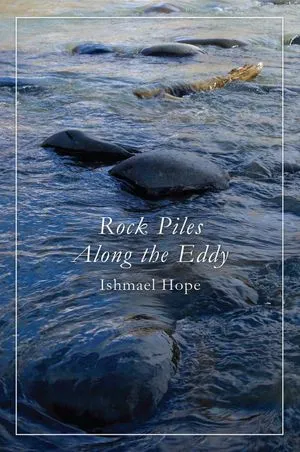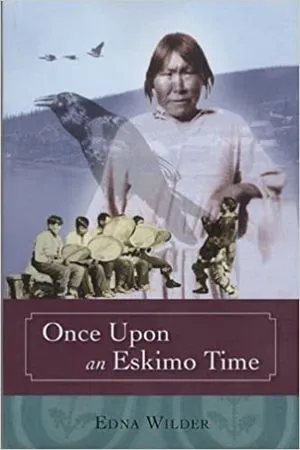
9 of the Best Books by Native Alaskans and Hawaiians
As a natal — but not Native — Alaskan, I grew up closer to Indigenous stories than many of the people I encountered when I moved down to the “Lower 48.” My education was a mix of Native Alaskan stories and traditionally western ones, and as an adult I am very grateful for the local Native people who share their culture with all the people who live in Southeast Alaska. Alaskans seem to share this communal understanding that we live on Native land, and have a (varying, sometimes grudging) respect for the people who lived here long before Alaska had official borders.
We seem to share that understanding with Hawai’ians, both natal and Native. When I moved to Colorado for college, the Alaskan and Hawai’ian students banded together to help each other learn about the differences in culture between our states and the rest of the country. Conversations were full of Hawai’ians assuring the Alaskans that they weren’t actually Mainlanders, in the same way that Alaskans don’t call the United States that lies outside of Alaskan borders the “Lower 49.”
To celebrate the ties that bind Alaskans and Hawai’ians, I have collected a list of books by Native Alaskan and Hawai’ian authors (with one exception, noted).

The Tao of Raven by Ernestine Hayes
Ernestine Hayes continues the memoir begun in Blonde Indian, exploring her life after her return to Juneau, Alaska. She ties my favorite Tlingit story, “Raven and the Box of Daylight,” together with Sun Tzu’s The Art of War in order to explore the effect that colonization has had on Alaskan Native people. Hayes’s lyricism is legend in Alaska, forming a language for her people and other members of the Alaska Native community to “walk her people out of the cycles of historical trauma, into the light of hope after war.”

The Raven’s Gift by Don Rearden
John Morgan and his wife have just moved to a remote Alaskan village when an epidemic strikes. The isolated community frays and falls apart; John finds himself setting out on a thousand-mile journey to across the tundra to find help. While crossing the vastness of Alaska, he encounters a pair of Inuit women, and they form a mutually beneficial relationship — John needs their knowledge of the terrain, and there is survival in numbers.

Rock Piles Along the Eddy by Ishmael Hope
This is the second poetry collection by Tlingit and Inupiaq poet Ishmael Hope. He weaves the marrow-deep belief that there is spirit in all things into all of his work, connecting the visible and invisible world through the text of his poems. “He has given us words that nourish,” says Ernestine Hayes. (Note: this book appears to be out of print, but if you can find a copy, it is well worth your time.)

Once Upon an Eskimo Time by Edna Wilder
Edna Wilder grew up along the Bering Sea, in a small mining community on the Seward Peninsula called Bluff. Her father was an Englishman who came to Alaska during the Gold Rush of 1898 and survived the Chilkoot Trail; her mother was Inupiaq. This is the story of a year in her mother’s life. It follows an Inupiaq tradition of telling the story of an elder’s year to pass along their history to the new generation. The year Wilder chose is the year that white men first appeared in her mother’s village, and it is a stark and beautiful picture of a way of life that no longer exists in the same form.

Two Old Women by Velma Wallis
This is a novelized version of a very old Alaskan legend. Two quarrelsome old women are abandoned by their tribe during a brutal winter famine and must learn to work together in order to survive — and to show their tribe that they are worth keeping. Author Velma Wallis lived a subsistence lifestyle for over a dozen years in a cabin 12 miles outside of Fort Yukon, Alaska, while she worked to define herself. In some ways, this is also Wallis’s story, and the spirit she breathes into this legend is what makes her tale speak “straight to the heart with clarity, sweetness, and wisdom,” according to Ursula K. Le Guin.

Shark Dialogues by Kiana Davenport
Shark Dialogues traces one Hawai’ian family from the initial meeting of a shipwrecked sailor and a Tahitian princess in the 19th century, through the years to their modern descendants. The family now embodies the Chinese, Japanese, Filipino, and Caucasian influences on Hawai’i. Who doesn’t love an epic generational tale? Shark Dialogues and its loosely related companion epic, Song of the Exile, have been compared to James A. Michener’s Hawaii epic, with Davenport’s considered more nuanced and authentic.

Wild Meat and the Bully Burgers by Lois-Ann Yamanaka
Lovey Nariyoshi doesn’t live in the Hawai’i of tourists and leis. She and her family live on the Big Island in Hilo, on the edge of poverty. This is the story of a girl growing up in a tropical place that is a paradise for other people, but simply home to her and her friends — as well as her schoolyard bullies. Told in pidgin, her story is simultaneously a satire of haole happiness and a meditation on what life can truly look like.

The Descendants by Kaui Hart Hemmings
Matthew King is the descendant of missionary ancestors and a member of the Hawai’ian royal family by way of one of those missionaries marrying a princess. He is one of the largest landowners in the state, but all of that seems to pale in the light of his wife’s coma. Before she can be taken off of life support, her living will requires a gathering of friends and family to say goodbye — including the man with whom she was having an affair, and possibly the only person she truly loved. Matt sets off on a road trip to find him, along with his daughters, and along the way finds himself on a journey of growth, revelations, and unforeseen humor.

Hawaii’s Story by Hawaii’s Queen by Queen Liliuokalani
This is the story of Hawai’i as told by its final queen, Liliuokalani. She describes her upbringing, her accession to the throne, and the overthrow of her monarchy by pro-American forces. She sheds light on her pleas to the United States government to return her kingdom to her, and the subsequent rebellion when the government refused. She was put on trial for leading the rebellion, and Hawai’i was annexed by the United States the same year this book was published in 1898. It is a key document of the times, telling the story of the end of the Kingdom of Hawai’i.

The Folding Cliffs by W. S. Merwin
W.S. Merwin was the 17th Poet Laureate of the United States. He won many, many literary prizes for his work, and while he is white and not a Native Hawai’ian, he lived in Hawai’i and raised endangered palm trees there. I am including this narrative poetic work because of reviews by Native Hawai’ians who express appreciation for his handling of the epic and heartbreaking story of the U.S. government’s attempt to corral possible victims of leprosy. One family resisted and fled, chased by gunboats, into the Hawai’ian wilderness.
One of the things I noticed while compiling this list is that Native Alaskan voices are surprisingly hard to find. While researching, I came to think of this as the “Jack London effect,” where white people who have explored and endured the Alaskan wilderness feel empowered to write about it as Alaskans. There’s nothing necessarily wrong with that; it simply muddies the waters when trying to find authors who are Native Alaskan and whose books have been published. Alaska is a land of rich storytelling, but much of it remains an oral tradition, complicating things further.
I cannot speak for Native Alaskans and Hawai’ians, being a white woman of South American heritage whose parents just happened to move to Alaska before I was born. Using my status as an Alaskan sourdough and not a cheechako, though, I feel confident expressing that Native Alaskan and Hawai’ian authors are underrepresented even among Indigenous American authors, who are already severely underrepresented due to the overwhelming whiteness of American publishing. Their voices deserve to be heard, held up, and respected.














